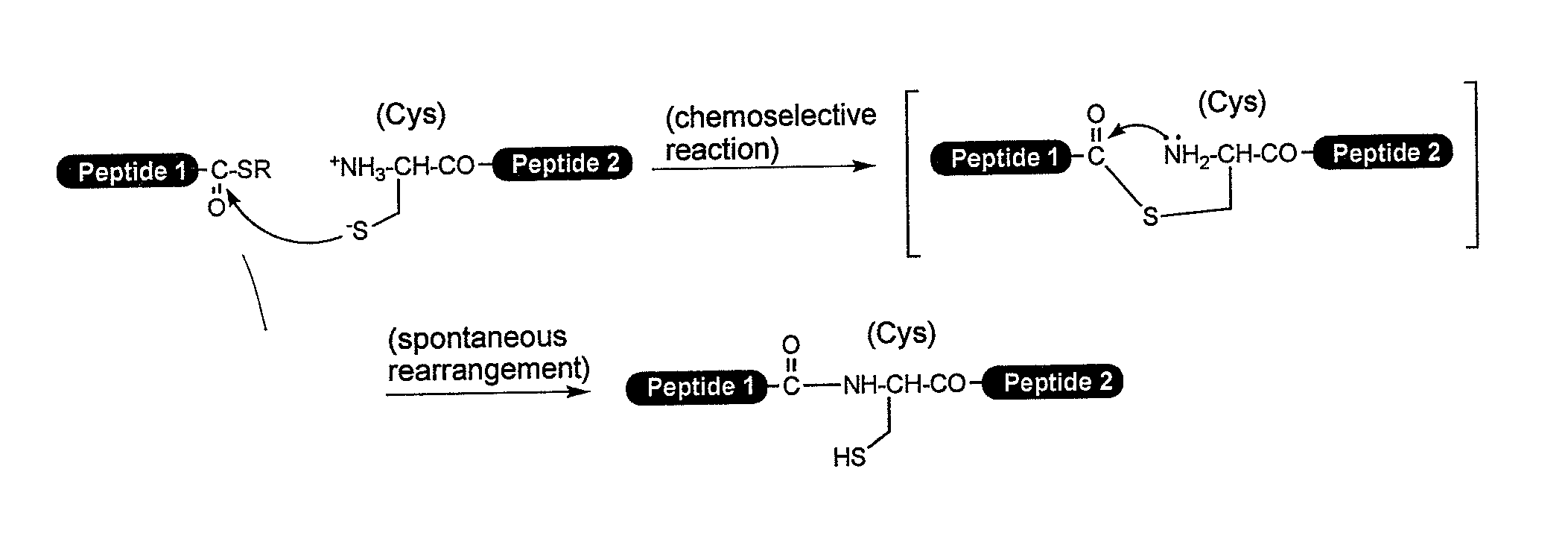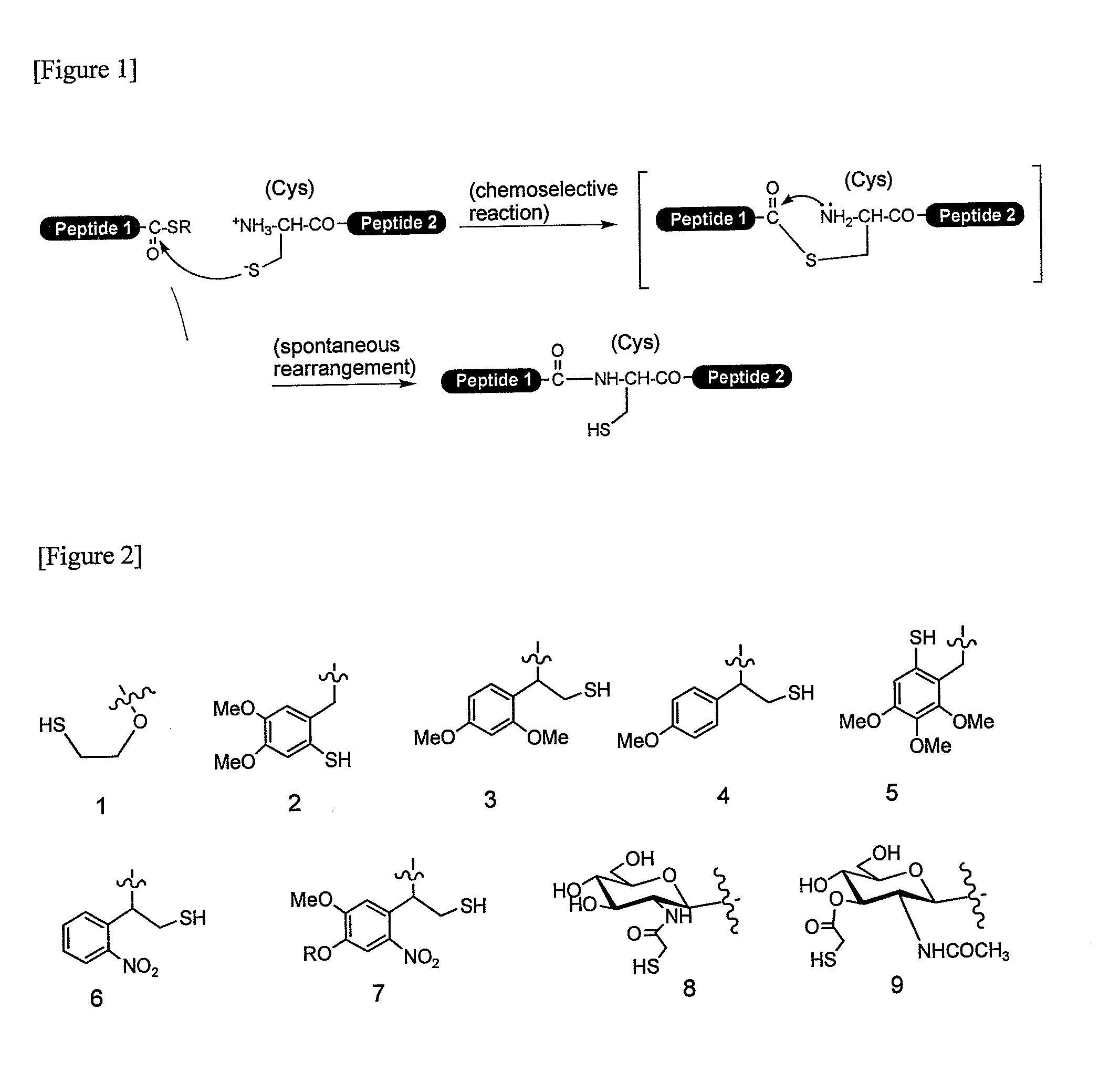Method for producing peptide
a peptide and peptide technology, applied in the field of new peptide synthesizing methods, can solve the problems of lowering the recovery rate, unable to perform condensation, and having various defects, and achieves excellent ligation efficiency, low possibility, and high stability
- Summary
- Abstract
- Description
- Claims
- Application Information
AI Technical Summary
Benefits of technology
Problems solved by technology
Method used
Image
Examples
example 1
(1) Synthesis of Compound 15 (Fmoc-Ser(CH2SCH3)—OBut)
[0085]To Fmoc-Ser-OBut (2.0 g, 5.2 mmol) were added DMSO (10 ml, 140 mmol), Ac2O (6.6 ml, 70 mmol) and AcOH (10 ml, 180 mmol), and the mixture was caused to react at room temperature for two days. After vacuum concentration was carried out, distilled water was added thereto until precipitate was generated, and supernatant was removed therefrom. The precipitate was dissolved in ethyl acetate, which was washed with an aqueous saturated sodium bicarbonate solution and an aqueous saturated sodium chloride solution, and the resultant precipitate was dried with sodium sulfate. After the sodium sulfate was filtered off, vacuum concentration was carried out to give an oily material, and the oily material was purified through a silica gel column chromatography (silica gel 230 g, toluene:ethyl acetate=9:1) to obtain compound 15 (1.8 g, 4.1 mmol, 79%).
Rf 0.48 (toluene:ethyl acetate=5:1). 1H-NMR (400 MHz, CDCl3, TMS), δ 7.76 (d, 2H, J=7.3 Hz,...
PUM
| Property | Measurement | Unit |
|---|---|---|
| Molar density | aaaaa | aaaaa |
| Molar density | aaaaa | aaaaa |
| Fraction | aaaaa | aaaaa |
Abstract
Description
Claims
Application Information
 Login to View More
Login to View More - R&D
- Intellectual Property
- Life Sciences
- Materials
- Tech Scout
- Unparalleled Data Quality
- Higher Quality Content
- 60% Fewer Hallucinations
Browse by: Latest US Patents, China's latest patents, Technical Efficacy Thesaurus, Application Domain, Technology Topic, Popular Technical Reports.
© 2025 PatSnap. All rights reserved.Legal|Privacy policy|Modern Slavery Act Transparency Statement|Sitemap|About US| Contact US: help@patsnap.com



